Aperture's Blog, page 186
January 14, 2014
Cities, Real or Imagined: LagosPhoto 2013
LagosPhoto 2013 is the fourth iteration of the Nigeria-based international photography festival, which runs yearly through October and November. This year the theme of the festival—“The Megacity and the Non-City”—moved from last year’s local focus on Lagos to larger philosophical questions about cities in general. In addition to the main exhibition, the festival included a broad program of satellite exhibitions, film screenings, discussions, master classes, and workshops in venues throughout Lagos. It also hosted the World Press Photo exhibition, the itinerant exhibition Témoin/Witness, the contemporary photography competition POPCAP, and the FOTObook project, among other collaborations and initiatives.
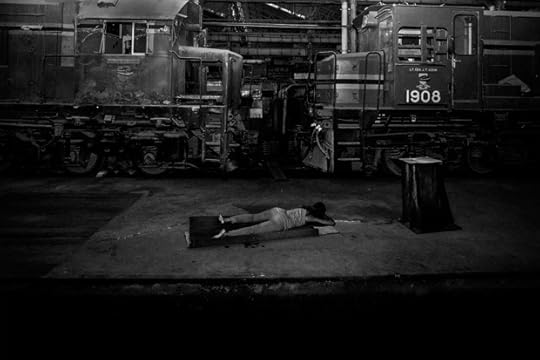
Adeola Olagunju, Dreamland, from the series Resurgence: A Manifesto, 2013
Nigerian artist Adeola Olagunju’s series Resurgence: A Manifesto seemed to me to encapsulate the dual elements of the festival’s theme. Her works represent a particular moment in our imagining of our relationship to cities, at least on the African continent: her photographed performances in abandoned industrial buildings present the theatrical as the point of connection between the city—real or imagined—and the bodies that occupy, are oppressed by, or shape city space.
These are certainly not new considerations, but the juxtaposition of images of performances and of cities, in this context, gave the festival theme a new and interesting twist. Though the curatorial statement presented in the festival press release covers a few too many bases, it does draw attention to the extent to which “displacement, fantasy, and an unstable sense of identity” constitute a political, emotive, and aesthetic response to the intellectually and spatially overwhelming idea of the “megacity.” In Lagos, Africa’s fastest-growing and most populous city, with an estimated population of around twenty million, the idea of enacting, insisting on, or even just conceiving of an individual identity is an urgent one, but also one not to be imagined without considering the historical and philosophical matrices at work in this context.
Hence the relevance of Cameroonian Samuel Fosso’s newest “performed” images in the series The Emperor of Africa (2013), in which Fosso plays Mao Tse-tung. The intersections of Chinese and African history go a long way back. In Nigeria in particular, the Chinese presence has grown steadily since the 1950s, often accompanied by controversy over issues such as Chinese migrants’ working conditions and the use of Chinese rather than Nigerian workers on construction projects. My own reference point for this work was an up-close view from a crowded expressway, on a shoot with the Dutch photographer Hans Wilschut, of the Lagos Rail Mass Transit project: the transit system’s Okokomaiko-Iddo-Marina Line, also known as the blue line, is being built by a Chinese construction company.
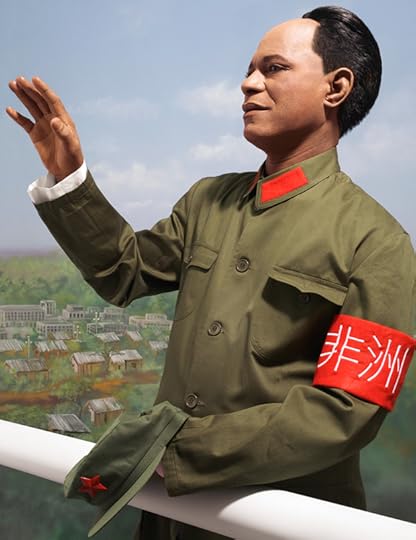
Samuel Fosso, Untitled, from the series The Emperor of Africa, 2013
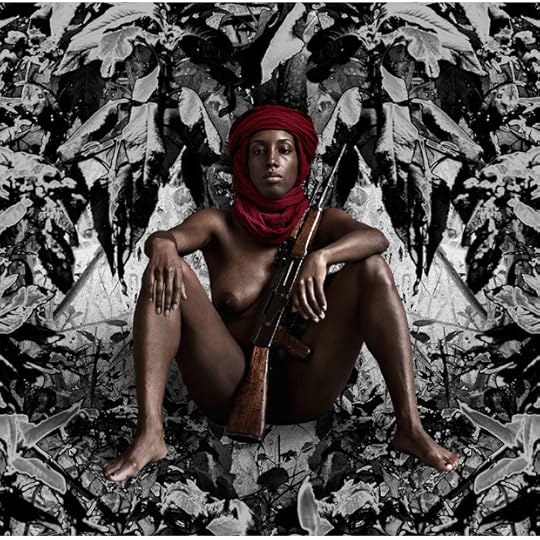
Ayana V. Jackson, Dictatorship, from the series Poverty Pornography, 2012
Not unlike Fosso, though with very different effects, Ayana V. Jackson (United States) and Uche Okpa-Iroha (Nigeria) insert themselves into historical and cultural narratives in order to redirect the gaze of the viewer and interrogate the politically loaded presence, or absence, of the black body. In Jackson’s series Poverty Pornography (2011), the photographer plays a lynched slave, then a child soldier, putting her own beautiful, naked body in place of the usually abject subject depicted in such images. In his series The Plantation Boy (2012), Okpa-Iroha plays an imagined black character in Francis Ford Coppola’s The Godfather, appearing in film stills alongside Brando and De Niro. In the same pavilion as these two series, Spanish photographer Cristina de Middel’s The Afronauts (2012), an invented version of one Zambian man’s lunar longings and his bizarre (but earnest) 1960s space program, makes explicit the aspirations toward, and the possibilities afforded by, fiction in the work of many of the photographers in the festival.
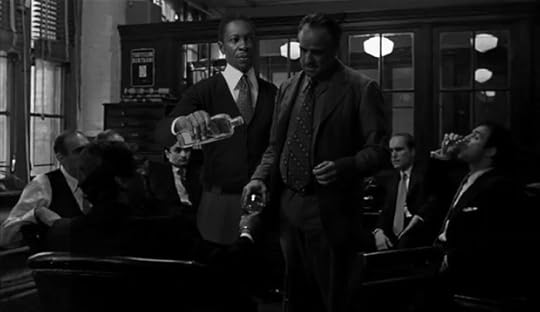
Uche Okpa-Iroha, Untitled, from the series The Plantation Boy, 2012
Curatorial arrangements set these works, as well as Kenyan Cyrus Kabiru’s C-Stunners (2012) and Beninese Leonce Raphael Agbodjelou’s Musclemen series (2012), against the theatrical backdrop of the city. In Hans Wilschut’s painterly cityscapes of various megacities, Lagos included, the city appears as an amalgamation of the grandiose, the absurd, and the spectacular. On the other hand, in Nigerian Akintunde Akinleye’s Quiet Lagos series from 2013, the usually frenetic and crowded city is dramatically empty of people and traffic, functioning for a moment as ruin or mausoleum.
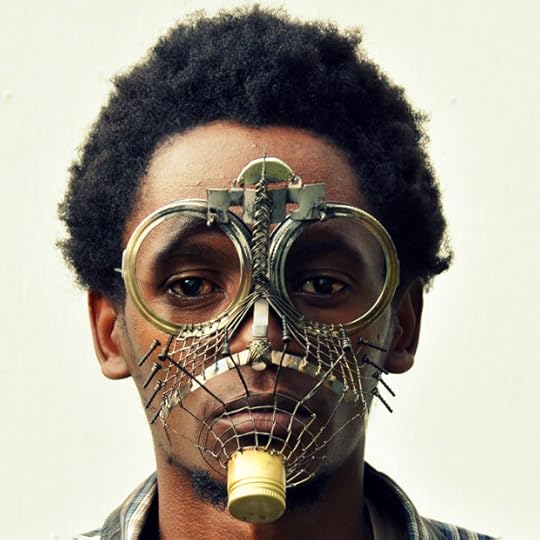
Cyrus Kabiru, Mask, from the series C-Stunners, 2012
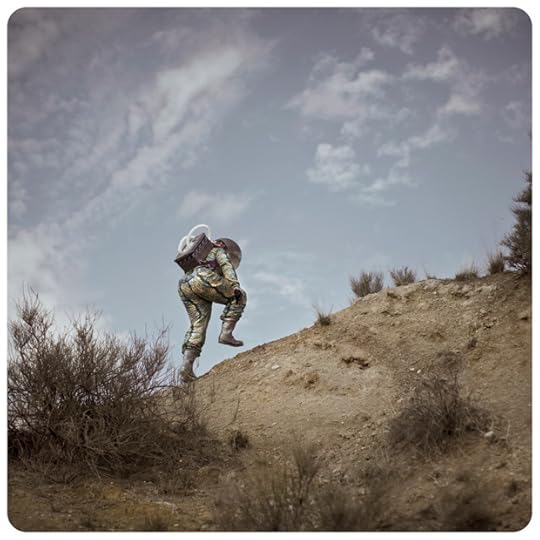
Cristina de Middel, Untitled, from the series The Afronauts, 2012
Supplementary shows lent depth and interest to the main exhibitions of the festival. Témoin/Witness included potent works by Sammy Baloji (Democratic Republic of Congo), Calvin Dondo (Zimbabwe), Sabelo Mlangeni (South Africa), Abraham Oghobase (Nigeria), Monique Pelser (South Africa), and Michael Tsegaye (Ethiopia), all participants in the 2008–10 Photographers’ Portfolio Meetings with Chris Dercon, Simon Njami, and other curators. Works by the winners of Piclet.org’s POPCAP prize—Anhua Collective (Spain), Dillon Marsh (South Africa), Cristina de Middel (Spain), Alexia Webster (South Africa), and Graeme Williams (South Africa)—were imaginatively printed on parachute cloth and displayed outdoors on bamboo scaffolding.
The 2013 World Press Photo exhibition included representations of the human capacity for cruelty that felt, at least for this viewer, uncomfortably at odds with the opulence of the hotel that hosted the exhibition. Nonetheless, LagosPhoto’s program of master classes, discussions, and film screenings—marred only by the failure to start any single event on time—made this a rich and varied festival, one that now has an important place on the international photographic calendar.
—
Bronwyn Law-Viljoen is a senior lecturer in creative writing at the University of the Witwatersrand, Johannesburg, and editor of the arts publisher Fourthwall Books.
The post Cities, Real or Imagined: LagosPhoto 2013 appeared first on Aperture Foundation NY.
January 9, 2014
John Berger: Understanding a Photograph (Video)
In conjunction with the release of John Berger’s collected writings on photography, Understanding a Photograph (Aperture, 2013), Aperture hosted a panel discussion on November 13 on the subject of Berger’s work and influence. Edited and with an introduction by Geoff Dyer, Understanding a Photograph assembles previously uncollected pieces written for exhibitions or catalogs, discussing a wide range of artists—from Henri Cartier-Bresson to Jitka Hanzlová.
Geoff Dyer was joined in conversation by acclaimed photographer Christophe Agou; Wendy Lesser, critic, novelist, and founding editor of The Threepenny Review; and Lawrence Weschler, artistic director emeritus of the Chicago Humanities Festival and curator of the annual Live Ideas Festival at Bill T. Jones’s New York Live Arts.
Following brief introductions, the group discussed Berger’s influence on their own work and the landscape of photography writing at large. Berger’s explorations of the relationships between the individual and society, culture and politics, and experience and expression through the written word and photographic collaborations are unmatched in their diversity, ambition, and reach. Reflecting on personal experiences, the speakers offered their views on Berger’s ideas and his character as both a colleague and a friend. Inviting the audience to join the discussion, the evening concluded with a brief Q&A session.
View “John Berger: Understanding a Photograph,” Part 2, Part 3, and Part 4 on Vimeo.
—
Understanding a Photograph is now available as part of the Aperture Ideas series.
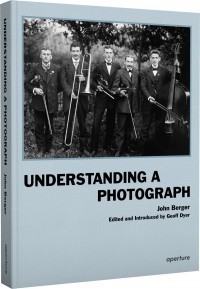 Understanding a Photograph
Understanding a Photograph$24.95
The post John Berger: Understanding a Photograph (Video) appeared first on Aperture Foundation NY.
December 26, 2013
Holiday Book Bazaar Recap
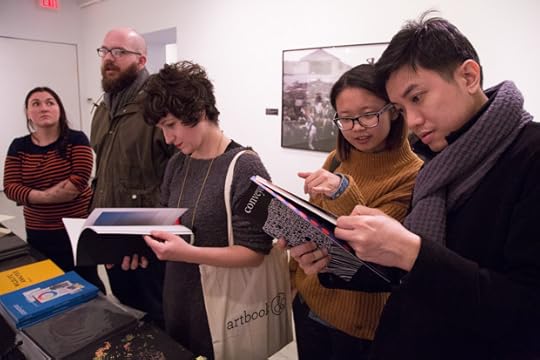

Image courtesy Allison Kruger Pierce.

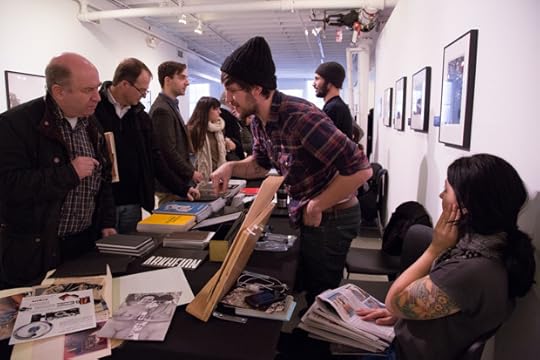
Image courtesy Allison Kruger Pierce.

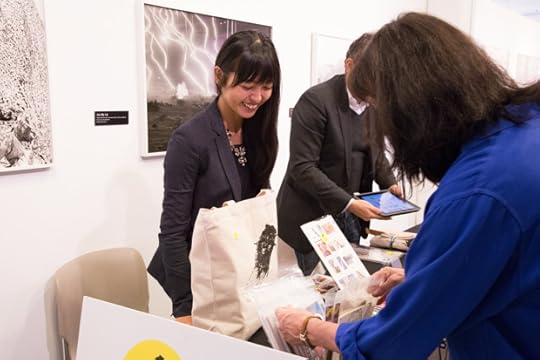
Image courtesy Allison Kruger Pierce.

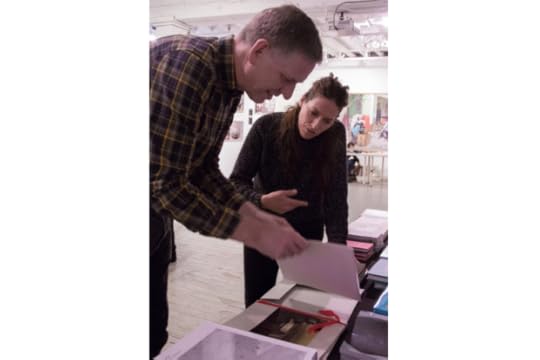
Image courtesy Allison Kruger Pierce.

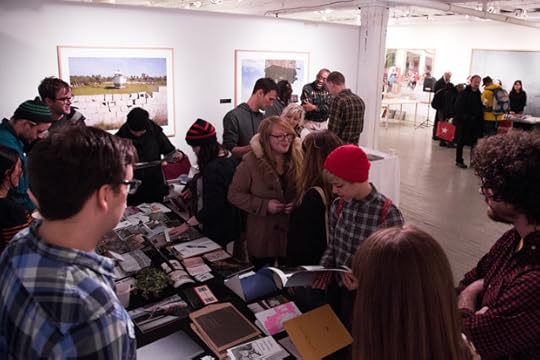
Image courtesy Allison Kruger Pierce.

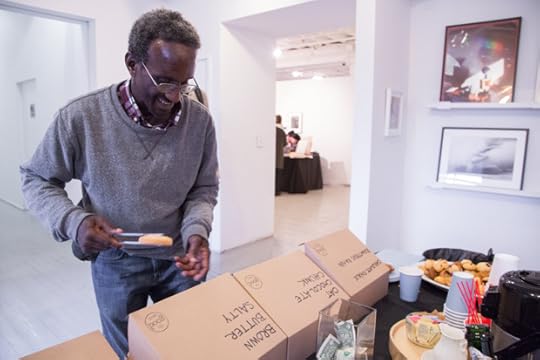
Cookies courtesy of baking company The Good Batch. Image courtesy Allison Kruger Pierce.

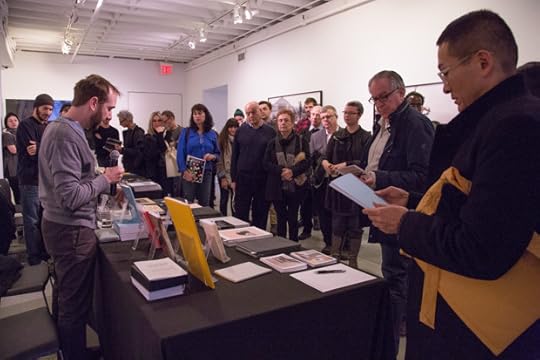
Image courtesy Allison Kruger Pierce.

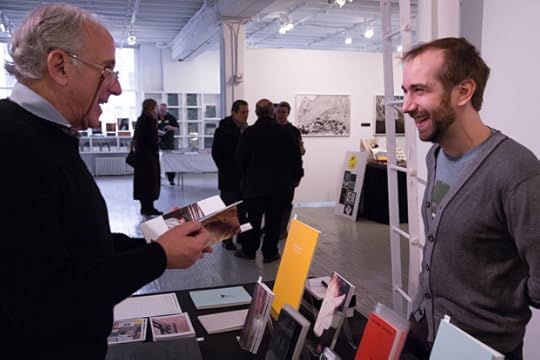
Image courtesy Allison Kruger Pierce.

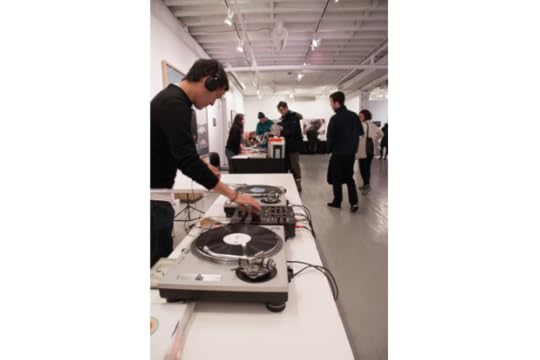
Music from guest DJ Stefan Ruiz. Image courtesy Allison Kruger Pierce.

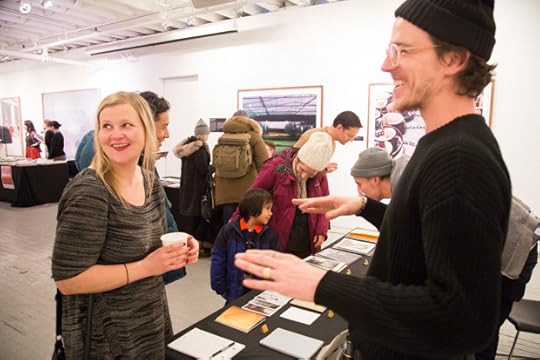
Image courtesy Allison Kruger Pierce.

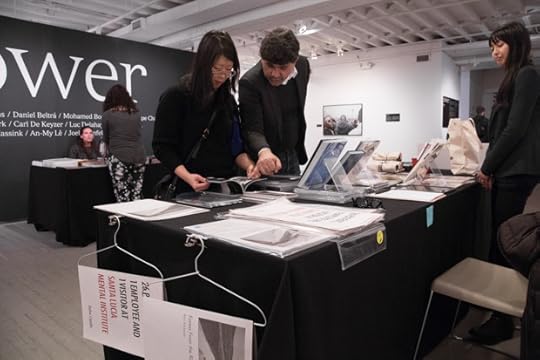
Image courtesy Allison Kruger Pierce.

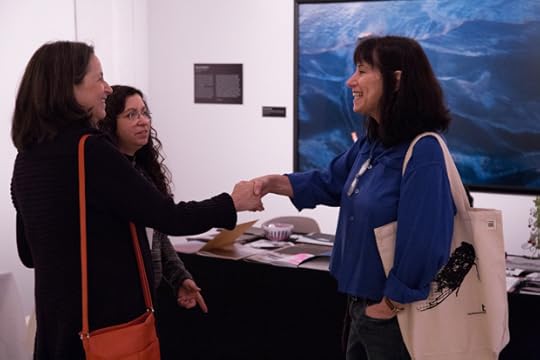
Image courtesy Allison Kruger Pierce.

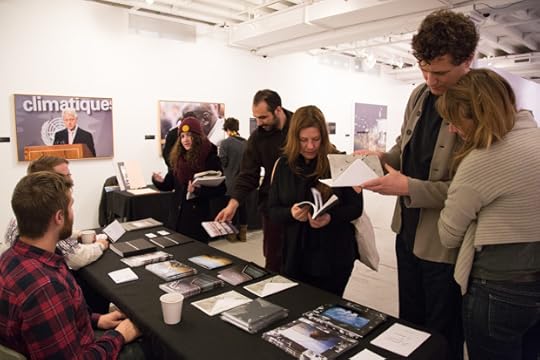
Image courtesy Allison Kruger Pierce.

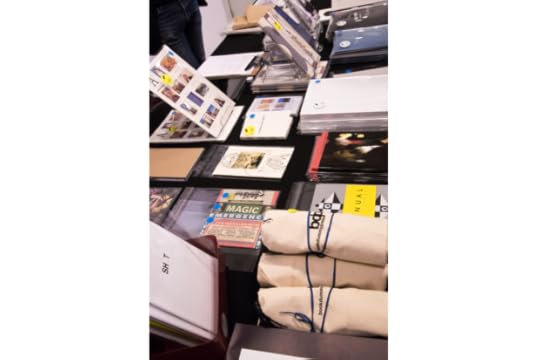
Image courtesy Allison Kruger Pierce.

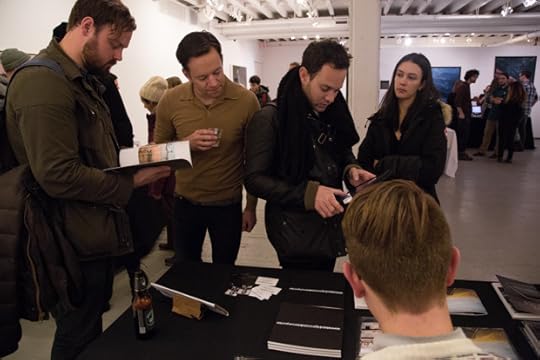
Image courtesy Allison Kruger Pierce.

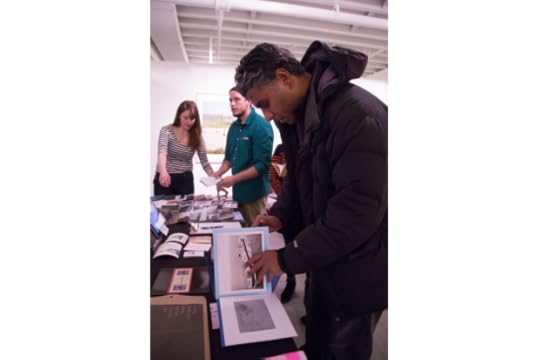
Image courtesy Allison Kruger Pierce.

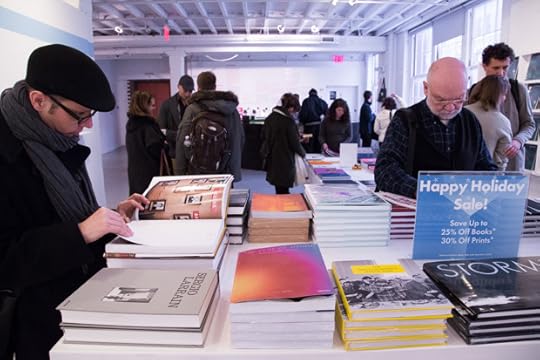
Image courtesy Allison Kruger Pierce.

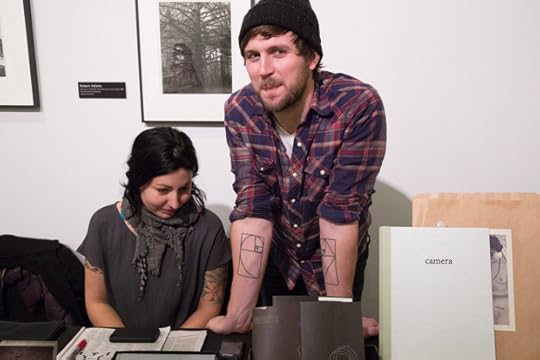
Image courtesy Allison Kruger Pierce.

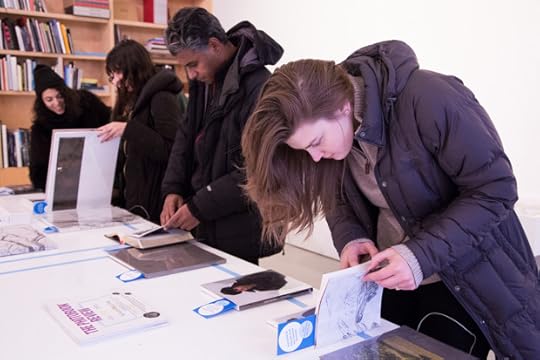
Image courtesy Allison Kruger Pierce.

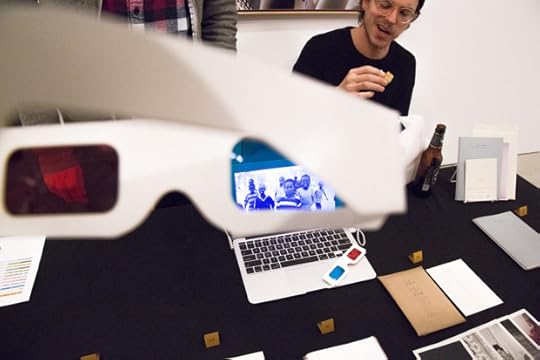
Image courtesy Allison Kruger Pierce.
On December 14, Aperture held its Holiday Book Bazaar in the Aperture Gallery and Bookstore. This year’s Bazaar was attended by distinguished photobook publishers and distributors such as Artbook/D.A.P., bookdummypress, Conveyor Arts, Coral Press Arts, Empty Stretch, Kurt Boone Books, MACK, Magnum Foundation, Oranbeg Press, Pau Wau Publications, and Spaces Corners. Everyone enjoyed winter festivities throughout the afternoon, including music from guest DJ Stefan Ruiz and delicious cookies donated by Brooklyn baking company The Good Batch.
The occasion also marked the opening of the 2013 Paris Photo–Aperture Foundation PhotoBook Awards Short List exhibition. All thirty of the short-listed books were on display, including the two winning volumes by Rosângela Rennó and Óscar Monzón.
The 2013 Paris Photo–Aperture Foundation PhotoBook Awards Short List will be on view at Aperture Gallery until January 30, 2014.
The post Holiday Book Bazaar Recap appeared first on Aperture Foundation NY.
Aperture Matters: Diana Panora
Members of the photography community and beyond reflect on the role that Aperture’s magazine, books, and educational programs have played in their lives.
Before I started as a finance and administration work scholar at Aperture, I struggled to figure out what I wanted to pursue in my professional life. I graduated from the City College of New York with a BA in International Studies, and I was not sure if I wanted to pursue accounting or something else.
At first, the internship was very challenging—I had no experience with photography. My duties and responsibilities involved working not only with the finance department, but with Aperture as a whole. Since Aperture is not only a multiplatform publisher but also runs a gallery, bookstore, educational programs, and more, the finance department has to interact with several other departments, all of which are interconnected in one way or another. I have learned so much about photography and publishing: from the genesis of a book idea with an artist, to printing and production, right up until the book makes it into stores. This has made me appreciate the arts so much more.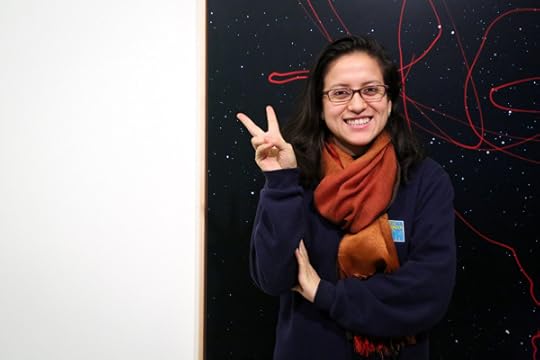
Former Aperture work scholar Diana Panora at Aperture Gallery in October, 2013
As I reached the end of my term as a work scholar, I applied for a program administrator–payment processing position at the Institute of International Education in New York. My interview at IIE, a non-profit organization, revolved around the skills I had developed at Aperture. I was able to provide the interviewers with detailed answers to their questions and give them solutions to their hypothetical finance scenarios. I was able to answer their questions with confidence. I believe that this was the best I have ever performed in a job interview. After finding out I was the final candidate, I felt I had redeemed myself; last year, I had applied for a similar position at IIE, but did not get the job. I know it was because I did not have sufficient professional experience.
I joined Aperture in search of professional enrichment, and it did not disappoint. I can now move forward with my academic and professional life; I plan to work and take accounting courses on the side to become more prepared and knowledgeable. I was sad to leave Aperture, but I am happy I started my post-graduation career there. I grew not only professionally, but as a person. I want to thank the finance and administration department particularly for their support, friendship, and genuine interest in my professional growth. Even though I kept a low profile, I hope I made a difference to every person at Aperture.
—
Diana Panora was the finance and administration work scholar at Aperture for two terms in 2013. She now works at the Institute of International Education.
Learn more about the Stevan A. Baron Work-Scholar Program.
The post Aperture Matters: Diana Panora appeared first on Aperture Foundation NY.
December 23, 2013
Collaboration: Revisiting the History of Photography Recap
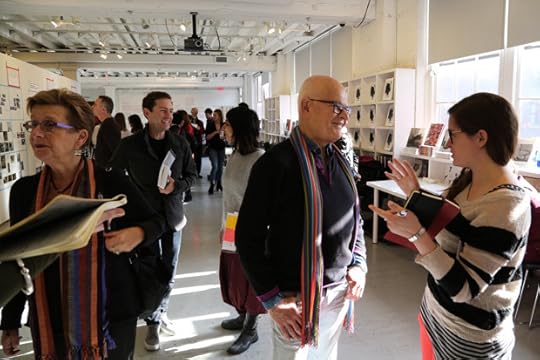

Image courtesy Allison Kruger Pierce.

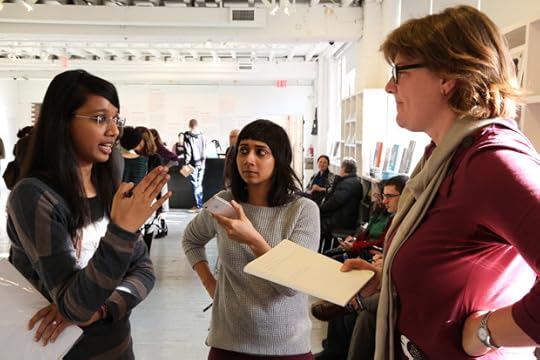
Image courtesy Allison Kruger Pierce.

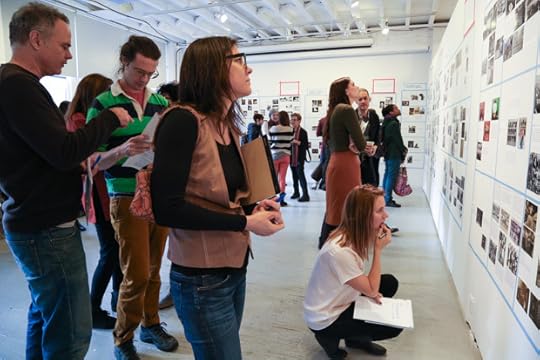
Image courtesy Allison Kruger Pierce.

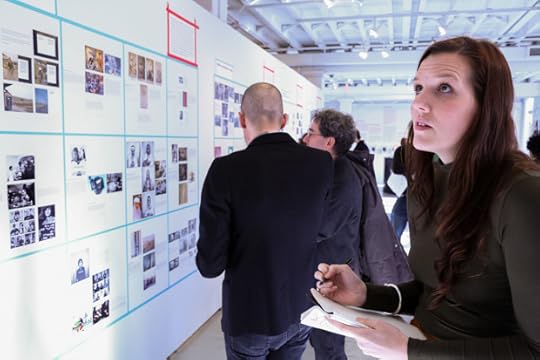
Image courtesy Allison Kruger Pierce.

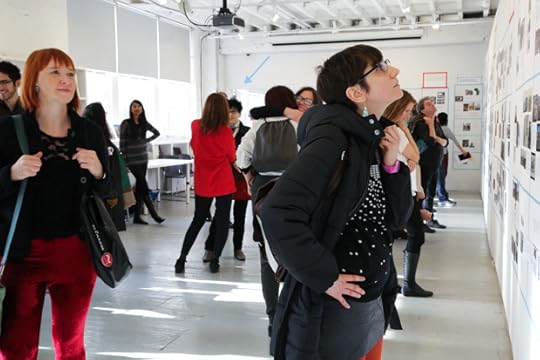
Image courtesy Allison Kruger Pierce.


Image courtesy Allison Kruger Pierce.


Image courtesy Allison Kruger Pierce.


Image courtesy Allison Kruger Pierce.


Image courtesy Allison Kruger Pierce.


Image courtesy Allison Kruger Pierce.


Image courtesy Allison Kruger Pierce.


Image courtesy Allison Kruger Pierce.


Image courtesy Allison Kruger Pierce.


Image courtesy Allison Kruger Pierce.


Image courtesy Allison Kruger Pierce.


Image courtesy Allison Kruger Pierce.


Image courtesy Allison Kruger Pierce.


Image courtesy Allison Kruger Pierce.


Image courtesy Allison Kruger Pierce.
“In this project we seek to reconstruct the material, practical, and political conditions of collaboration through photography and of photography through collaboration. We seek ways to foreground—and create—the tension between the collaborative process and the photographic product by reconstructing the participation of others, usually the more ‘silent’ participants. We try to do this through the presentation of a large repertoire of types of collaborations, those which take place at the moment when a photograph is taken, or others that are understood as collaboration only later, when a photograph is reproduced and disseminated, juxtaposed to another, read by others, investigated, explored, preserved, and accumulated in an archive to create a new database.”
— Azoulay, Ewald, and Meiselas’s description of the “Collaboration” project.
On December 7, Ariella Azoulay, Wendy Ewald, Susan Meiselas, and graduate students from the Modern Culture and Media Department at Brown University and the Rhode Island School of Design met for an Open Lab at Aperture Gallery. The team, which included graduate students Nathan Lee, Drew Ludwig, Nupur Mathur, Rijuta Mehta, Francisco Monar, Tyler Theus, and Sarah Yahm, organized the event with the aim of further developing the first draft of a research project that reconsiders the history of photography from the perspective of collaboration. Aperture visitors were encouraged to contribute to the informal discussion.
Prior to the event, the team had mapped out a timeline of approximately one hundred photography projects—in which photographers “co-labored” with each other and with those they photographed—on the walls of the Aperture Bookstore. Open to public participation, this one-day event was a unique opportunity to engage with the project and provide input as to which photography projects were felt to be most significant, or to point out any that had been forgotten or overlooked.
This enlightening dialogue was made possible by the environment created by Azoulay, Ewald, Meiselas, and the Brown and RISD students. Aperture would like to thank this collaborative team and the participating public for their energy and inspiration.
The post Collaboration: Revisiting the History of Photography Recap appeared first on Aperture Foundation NY.
December 20, 2013
Year in Review: Top Articles of 2013
Thomas Ruff: Photograms for the New Age
Aperture editor Michael Famighetti interviews photographer Thomas Ruff about his new series of photograms, exhibited in Spring 2013 at David Zwirner in New York. (From Aperture #211.)
Redux: Italo Calvino’s “The Adventure of a Photographer”
Aveek Sen on Italo Calvino’s “The Adventure of a Photographer.” (From Aperture #212.)
Photo.edu: Toward a New Curriculum
What is photographic education today? The question elicits a wave of differing, often contesting, answers. Artist, writer, and educator Arthur Ou considers the current state of photo education. (From Aperture #210.)
On the occasion of the release of Japanese photographer Rinko Kawauchi’s newest book, Ametsuchi (Aperture, 2013), Aperture spoke with Hans Gremmen, the book’s designer.
Daido Moriyama: The Shock From Outside
Daido Moriyama speaks with Ivan Vartanian about the unending newness of photographs. (From Aperture #203.)
—
Want full access to Aperture magazine? Become a subscriber today!
 Aperture 213$19.95
Aperture 213$19.95The post Year in Review: Top Articles of 2013 appeared first on Aperture Foundation NY.
December 19, 2013
Artist Talk: Lisa Oppenheim (Video)
On November 19, in collaboration with the Department of Photography at Parsons the New School for Design, Aperture hosted a talk with artist Lisa Oppenheim. Two of Oppenheim’s recent projects involve photographic prints exposed using nontraditional light sources: for her series Smoke, Oppenheim solarized images of fire, explosions, and smoke with an open flame; for Lunagrams, she exposed contact prints of the moon to moonlight.
The images for both series were often sourced from the public domain. In Smoke, the works’ titles include detailed descriptions and dates for the historical events from which the negatives were sourced. Lunagrams consisted of new prints based on the work of John and Henry Draper, credited with creating the first telescopic photographs of the moon and other celestial bodies in the mid-nineteenth century. A portfolio of Oppenheim’s photographs was featured in Aperture magazine’s Summer 2013 issue, Curiosity, with an introduction by Brian Sholis.
View “Artist Talk: Lisa Oppenheim,” Part 2, and Part 3 on Vimeo.
—
Aperture magazine’s Summer 2013 issue, Curiosity, is now available.
 Aperture 211$19.95
Aperture 211$19.95The post Artist Talk: Lisa Oppenheim (Video) appeared first on Aperture Foundation NY.
December 18, 2013
Emmet Gowin: A Life in Photography (Video)
On December 3, Aperture Gallery hosted a talk and book signing with photographer Emmet Gowin, in honor of the release of his long-awaited survey Emmet Gowin (Fundación MAPFRE in association with Aperture, 2013). The book pays tribute to his prolific career as a photographer and his impact on the medium.
In his photographs, Gowin has threaded together seemingly disparate subjects—his wife, Edith, and their extended family; American and European landscapes; aerial views of environmental devastation—that reflect his ongoing interest in issues of scale, the impact of the individual, and notions of belonging. As a photography professor at Princeton University from 1973 to 2009, Gowin exerted a powerful influence on several generations of photographers.
A slideshow of images accompanied Gowin’s talk, followed by a Q&A and book signing.
View “Emmet Gowin: A Life in Photography” Parts 2, 3 and 4 on Vimeo.
—
Emmet Gowin’s survey, Emmet Gowin (Fundación MAPFRE in association with Aperture, 2013), is now available.
 Emmet GowinThis long-awaited survey features Emmet Gowin’s portraits of his extended family, landscapes, and aerial views of environmental devastation.
Emmet GowinThis long-awaited survey features Emmet Gowin’s portraits of his extended family, landscapes, and aerial views of environmental devastation.$80.00
The post Emmet Gowin: A Life in Photography (Video) appeared first on Aperture Foundation NY.
December 13, 2013
Teaching Visual Literacy Through Photography
Education is a priority of Aperture Foundation. In 2014, we are expanding our visual-literacy curriculum for children and teens, and launching new educational initiatives to inspire new audiences to take their interest in photography to the next level.
We have already laid the groundwork for our education plans, but there is still much work to be done. Please click above to hear directly from Aperture’s deputy director Sarah McNear regarding these vital programs along with an invitation to participate from executive director Chris Boot.
This holiday season, please consider offering a generous end-of-year donation. We thank you for your support!
DONATE TODAY!
The post Teaching Visual Literacy Through Photography appeared first on Aperture Foundation NY.
Taking Visual Literacy to the Next Level
Education is a priority of Aperture Foundation. In 2014, we are expanding our visual-literacy curriculum for children and teens, and launching new educational initiatives to inspire new audiences to take their interest in photography to the next level.
We have already laid the groundwork for our education plans, but there is still much work to be done. Please click above to hear directly from Aperture’s deputy director Sarah McNear regarding these vital programs along with an invitation to participate from executive director Chris Boot.
This holiday season, please consider offering a generous end-of-year donation. We thank you for your support!
DONATE TODAY!
The post Taking Visual Literacy to the Next Level appeared first on Aperture Foundation NY.
Aperture's Blog
- Aperture's profile
- 21 followers








